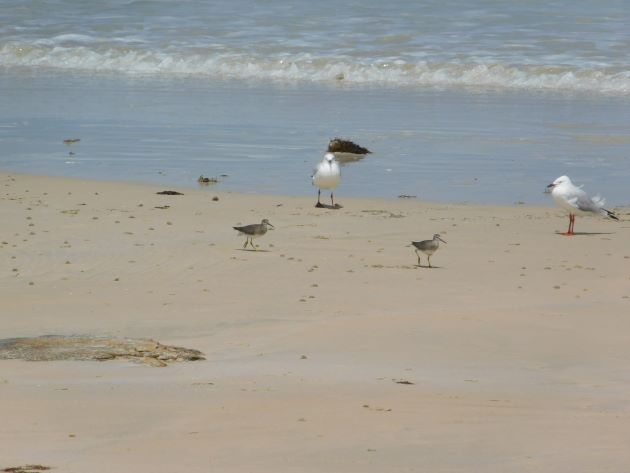
This week we have had very big tides and the migratory shorebirds that have returned to Broome from the Northern hemisphere have struggled to find any beach left to roost on at high tide. The roost sites in Roebuck Bay become inundated with the ocean and the shorebirds will move further afield to find a suitable roost. Gantheaume Point, the Port of Broome and Cable Beach become an alternative roost site during the very big tides, but for some of the shorebirds it can mean flying around until the tide drops again.
On Thursday October 27th the tide was racing in to peak at 9.55 metres at 11.34am to then drop back to 1.33 metres at 5.55pm followed by a night-time high of 10.11 metres at 11.41pm. I cycled to the beach for 10am and there was already a large flock of shorebirds to the south of the Surf Club towards Gantheaume Point. Two Grey-tailed Tattlers landed with the Silver Gulls near the rocks where there is normally four-wheel drive access. You can see from the header photo that the Grey-tailed Tattler had realised the tide was racing in and quickly moved onto a rock to escape the tide.
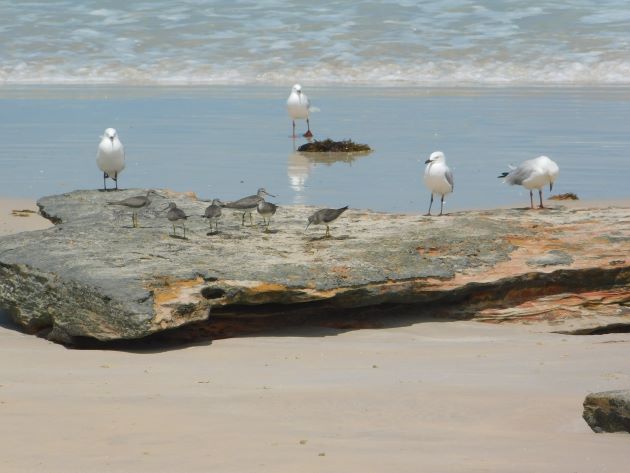
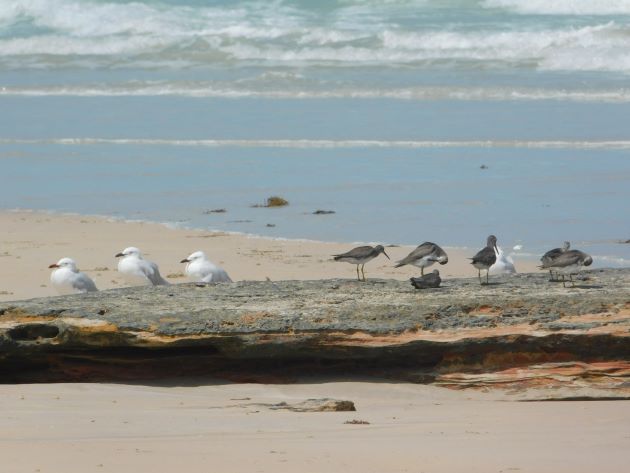
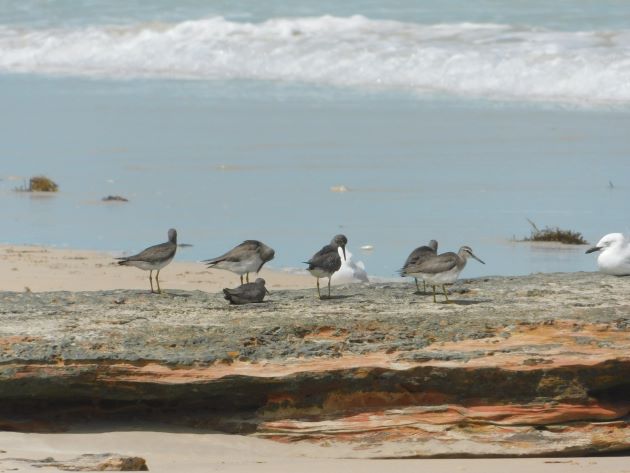
Grey-tailed Tattlers and Silver Gulls
Many different species of shorebirds travel the East-Asian Australasian Flyway to spend the non-breeding cycle of their lives here in Broome. Only this week the extraordinary journey of a Bar-tailed Godwit travelling from Alaska to Tasmania in just eleven days has shown us all just how incredible these shorebirds are. We are incredibly lucky to live in an area where the shorebirds can feed on the mudflats of Roebuck Bay with minimal disturbance.
Normally there is four-wheel drive access along a section of Cable Beach, but the Shire in recent years acknowledged that the flatback turtles needed help to survive. Originally the beach access was closed for a few hours each side of the biggest tides and then four-wheel drives would hopefully not drive or park on nest sites. The ruts left by tyres has also been an issue and the Shire have finally decided to give the flatback turtles an even better chance of survival by closing the beach access to vehicles for the months of December and January. This is welcome news, because it also minimises shorebird disturbance too in this section of the beach. When there is a very big tide you can only access the northern section of the beach by climbing up over the dunes, but it does offer great views of the coastline. We have not seen clouds for months now, but now we have a few to add some variety to our landscape.
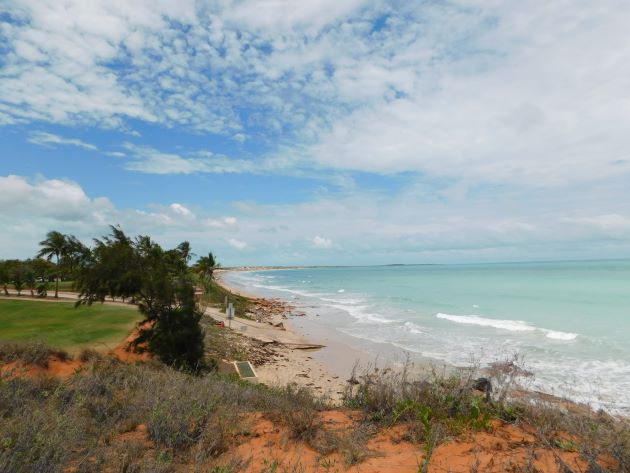
Beach access at Cable Beach-closed on big tides
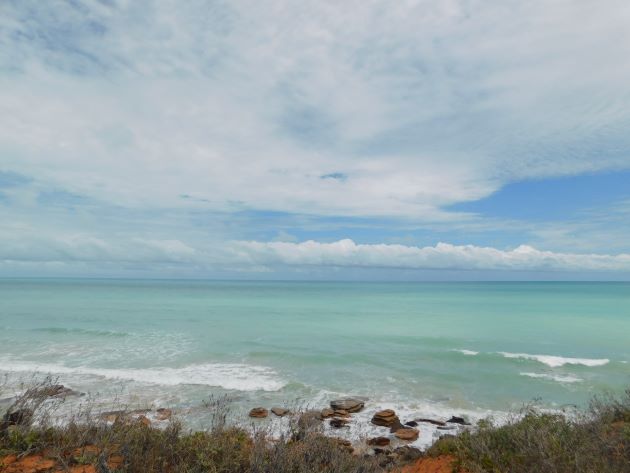
Clouds over the Indian Ocean at Cable Beach
I walked north for a few kilometres and then returned to my bike at the ramp to observe the six Grey-tailed Tattlers determined to roost on one of the rocks. It was thirty minutes before high tide and they were trying their best to not get swamped as each wave rolled in.
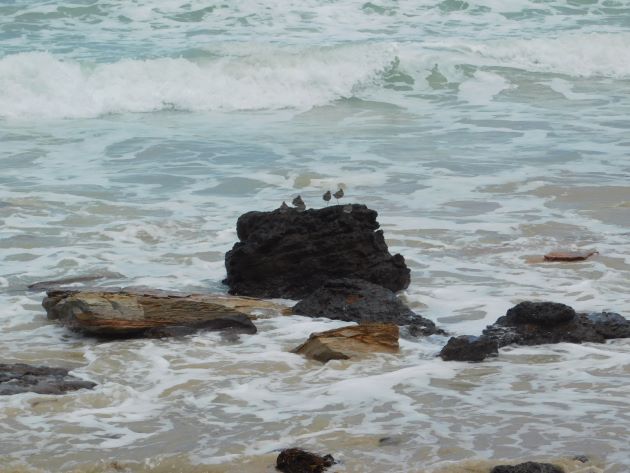
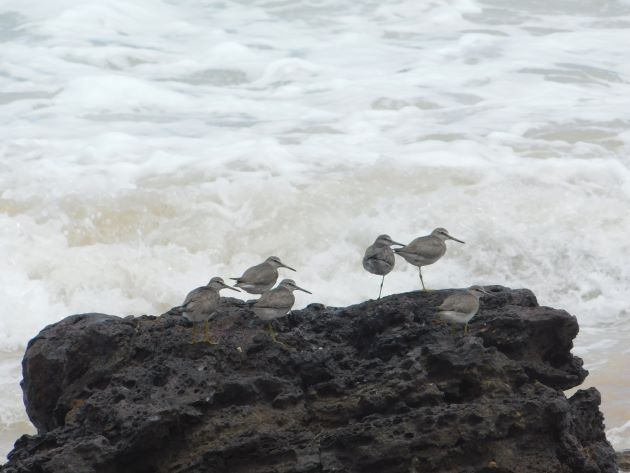
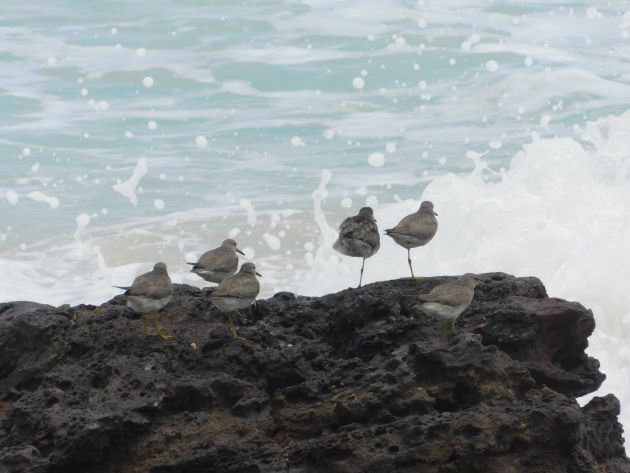
Grey-tailed Tattlers
One of the Grey-tailed Tattlers decided to leave the tall rock and move to the lower rock to the right. One wave later and it soon realised its mistake and flew back to the taller rock and had a good shake to get dry. All six of the Grey-tailed Tattlers watched and waited as the tide kept pushing in and eventually they admitted defeat and flew north.
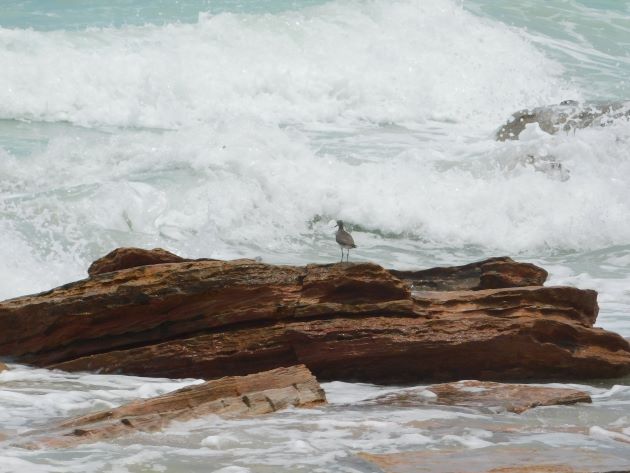
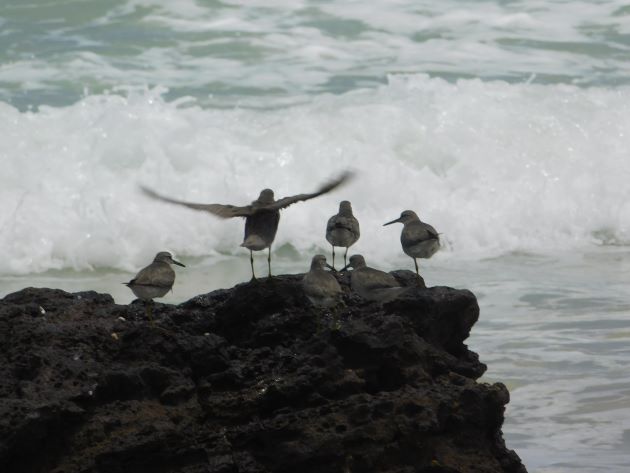
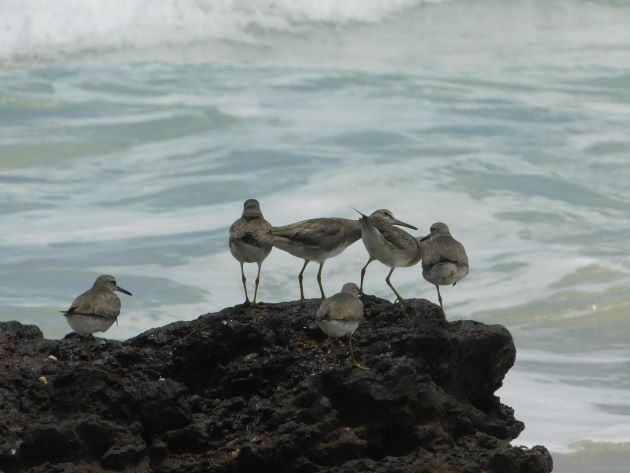
Grey-tailed Tattlers waiting for high tide
By heading north along Cable Beach the Grey-tailed Tattler would soon find long stretches of sand where they could roost. Although Cable Beach is not necessarily renowned for its shorebirds there are some decent sized flocks at this time of year and visiting the beach around high tide offers the best chance of the most shorebird species. Grey-tailed Tattlers prefer rocks on the beach, so they can be observed easily from the access ramp area on these large tides.


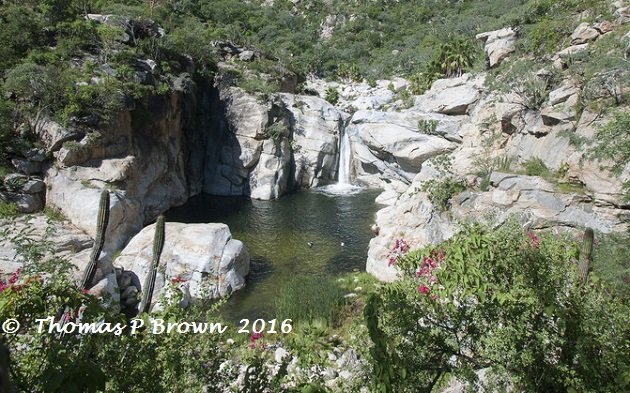

 New writers welcome – please contact us for details.
New writers welcome – please contact us for details.

















Leave a Comment